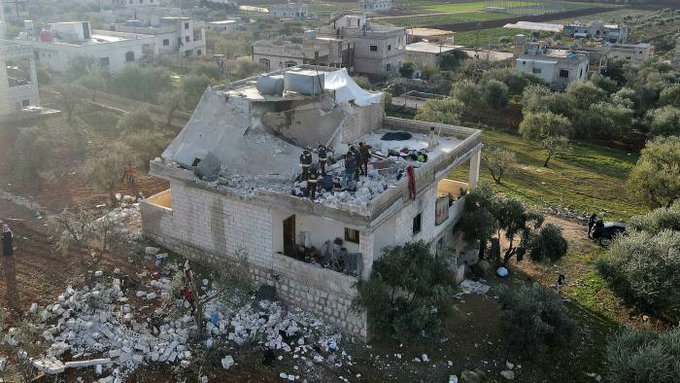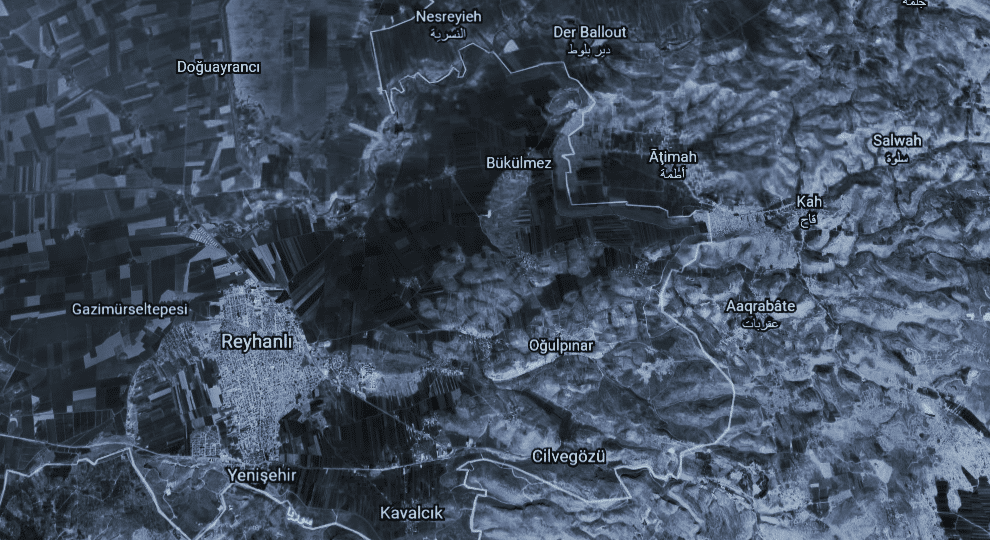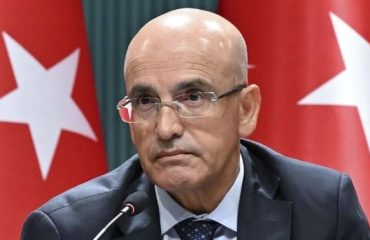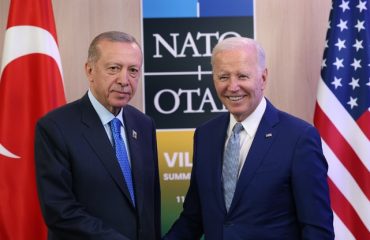

In the early hours of February 3, US special forces raided a two-story house in Atme village in Idlib, near Syria’s border with Turkey. At least 13 people, including six women and four children, were killed in the raid, which was carried out with intense helicopter fire. In a statement broadcast live from the White House, US President Joe Biden announced that one of those killed was the Islamic State of Iraq and the Levants (ISIS) leader Abu Ibrahim al-Hashimi al-Quraishi. More precisely, Quraishi blew himself up to avoid capture.
On October 26, 2019, the founding leader of ISIS, Abu Bakr al-Baghdadi, was also reported to blow himself up to avoid being caught during the raid of US special forces near Idlib. The US President of the date, Donald Trump, thanked “Russia, Turkey, Syria, Iraq and Syrian Kurdish forces” for their contribution to the Baghdadi operation. The following day, the Ministry of National Defense had confirmed that the US operation was coordinated with Turkey. Biden simply thanked the American soldiers.
However, like Baghdadi, Quraishi was found and killed in the Euphrates Shield area, which is under Turkey’s de facto control in Syria.
Atme Village is right under our noses
The Berisha village of Idlib, where Baghdadi was hiding, was 5 kilometers from Turkish border. Similarly Atme village, where Quraishi was killed, is also less than 1.5 kilometers from the Turkish border, that is, 15 minutes on foot, and 5 kilometers from the nearest Turkish village Bükulmez.

Cilvegözü border gate is also close to the district. However, in the Turkish province Hatay region, a wall has been built on the Syrian border. Officials emphasize that the transitions are much more difficult than in the past. The Ministry of National Defense announced on January 22 that two ISIS militants who wanted to infiltrate Turkey had been captured in Hatay.
In the immediate vicinity of Atme village, there is a large refugee camp built by Turkey in the form of briquette houses. The supervision and responsibility of the 300-thousand-person camp, which is managed with the support of AFAD (Disaster and Emergency Management Presidency of Turkey) and international humanitarian organizations under the United Nations.
According to military sources, although the region is within the scope the Euphrates Shield operation, there is no military unit stationed around Atme. Again, according to the same sources, there was no direct cooperation between the Turkish and American military in the framework of this operation.
How was the ISIS leader found, who was he?
Apart from the refugee camp, the region is generally under the control of the Hayat Tahrir al-Sham (HTS) organization, which is in line with al-Qaeda. Some security sources dwell on the possibility that the CIA received intelligence from the HTS, which is in hostility with ISIS, in the Qureishi operation, as it did in the Baghdadi operation.
The operation was carried out after ISIS raided the Syrian Democratic Forces-run prison in Hasakah, Syria, in the past weeks and made a group of ISIS militants escape.
However, intelligence sources comment that the detection, confirmation and preparation stages of an operation in this context cannot be completed in such a short time, and that the operation probably started earlier.
The real name of the ISIS leader Qureishi, who killed himself during the operation, is Emir Muhammed Said al-Maulana. He is the son of a Turkmen family from Tal Afar, Iraq. He studied Islamic Sharia at the University of Mosul. There is information that he commanded the ISIS forces that captured Mosul in 2014. Likewise, it was reflected in the international media that the Yazidi massacre was carried out by his order.
ISIS’s actions in Turkey
The Turkish National Intelligence Office (MIT) caught Kasım Güler, who was reported to be responsible for Turkey organization, on June 15, 2021 while trying to infiltrate Turkey. In the indictment prepared against Güler, it was claimed that ISIS buried weapons in six places in Turkey to be used when necessary and that they were planning to assassinate some politicians, including main opposition Republican People’s Party (CHP) leader Kemal Kılıçdaroğlu.
After the establishment of ISIS in 2013, the first action against Turkey was the Mosul Consulate General raid on June 11 2014. No one died in this action; 49 people who were taken hostage were rescued by mediators.
On July 20 2015, 34 people were killed and 100 injured in a suicide attack in Suruç.
On October 10, 2015, 109 people were killed, and more than 500 were injured in the suicide attack to the nation-scale peace march at Ankara Train Station. This was the deadliest terrorist attack in Turkey’s history.
On January 12, 2016, 13 people were killed and 12 injured in a suicide attack on a tourist group in Sultanahmet, Istanbul. On March 19, 2016, 5 people were killed and 36 injured in a suicide attack on tourists on Istiklal Street, Istanbul.
On June 28, 2016, 45 people were killed and 239 injured in the Istanbul Atatürk Airport raid.
On January 1, 2017, 39 people were killed and 70 injured in the raid on the Reina nightclub in Istanbul.


